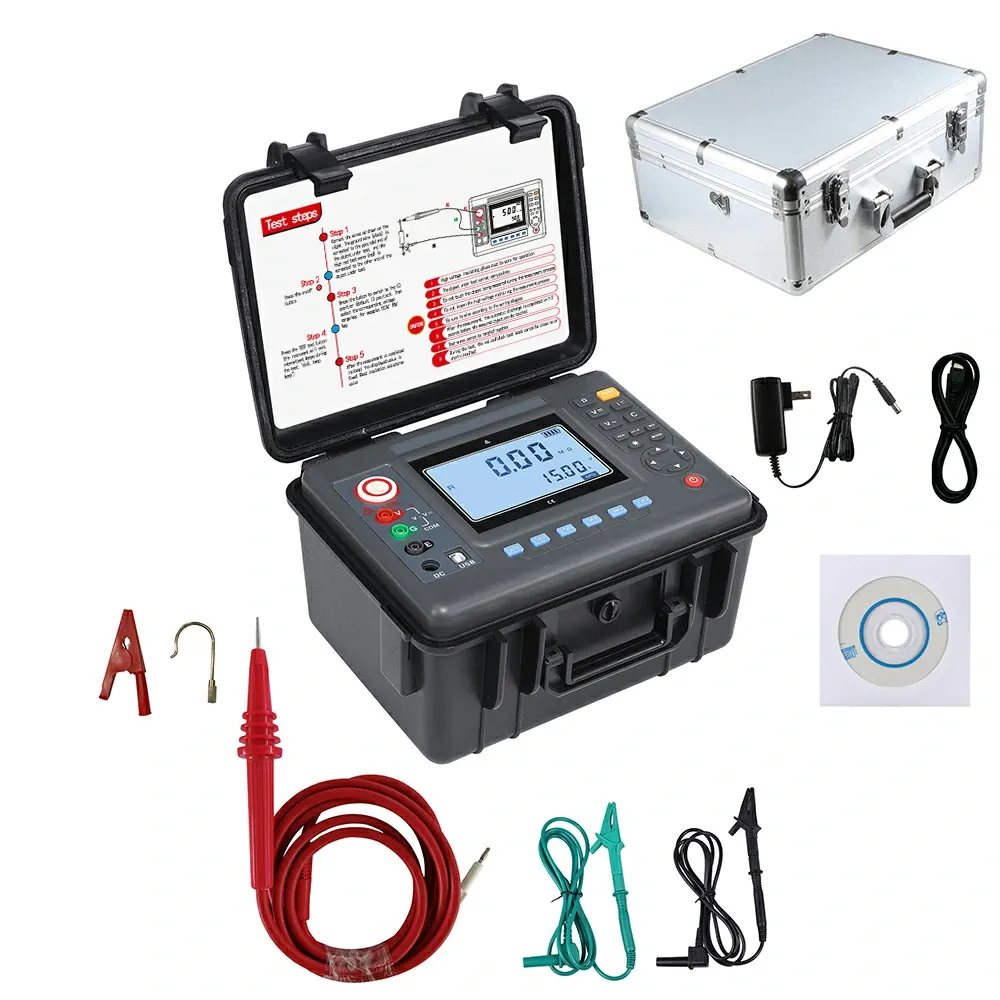 English
English


insulation tester
Understanding Insulation Testers Essential Tools for Electrical Safety
Insulation testers are vital instruments in the field of electrical safety, designed to measure the integrity of electrical insulation. These devices are crucial for ensuring that electrical systems operate safely and efficiently, preventing potential hazards such as electrical shocks, fires, and equipment damage.
At its core, an insulation tester works by applying a high voltage to the insulation material and measuring the resistance. The primary objective is to determine the resistance values; a higher resistance indicates good insulation, while lower values suggest deterioration or failure of the material. Typically, insulation testers apply voltages ranging from 250V to 1000V, depending on the specific requirements and standards of the system being tested.
There are several reasons why insulation resistance testing is critical. First and foremost, it helps identify insulation failures before they lead to catastrophic events. Regular testing can prevent unexpected system breakdowns and prolong the lifespan of electrical systems, thereby reducing maintenance costs over time. Moreover, insulation testers assist in compliance with safety regulations, as many industries require regular inspections to adhere to standards set by governing bodies.
insulation tester

Using an insulation tester is relatively straightforward, but it's essential to follow certain procedures to ensure accurate results and safety. Before testing, the circuit under inspection should be de-energized to avoid electrical shock. Then, the leads of the tester are connected to the circuit, and the device is activated to generate a test voltage. The reading is taken from the display, which indicates the insulation resistance in megaohms (MΩ).
Calibration and maintenance of insulation testers are equally important. Regular calibration ensures the device provides accurate readings, while routine maintenance checks prevent any operational issues that could lead to incorrect assessments. Users should also be aware of the limitations of their insulation testers, as some may not be suitable for certain insulation types or voltages.
Modern insulation testers come equipped with various features, such as digital displays, data logging capabilities, and preset test voltages for different applications. Some advanced models even include features like automatic calculations of polarization index and dielectric absorption ratio, providing deeper insights into the condition of insulation systems.
In conclusion, insulation testers are indispensable tools for electrical engineers, technicians, and safety inspectors. They play a crucial role in maintaining electrical safety standards, improving equipment reliability, and ultimately protecting lives and properties. Investing in a quality insulation tester and ensuring regular usage is a proactive step toward creating a safer electrical environment. Whether in industrial settings or residential installations, the importance of these devices cannot be overstated.
-
Differences between open cup flash point tester and closed cup flash point testerNewsOct.31,2024
-
The Reliable Load Tap ChangerNewsOct.23,2024
-
The Essential Guide to Hipot TestersNewsOct.23,2024
-
The Digital Insulation TesterNewsOct.23,2024
-
The Best Earth Loop Impedance Tester for SaleNewsOct.23,2024
-
Tan Delta Tester--The Essential Tool for Electrical Insulation TestingNewsOct.23,2024





